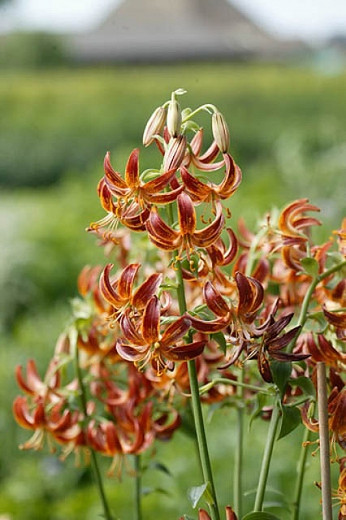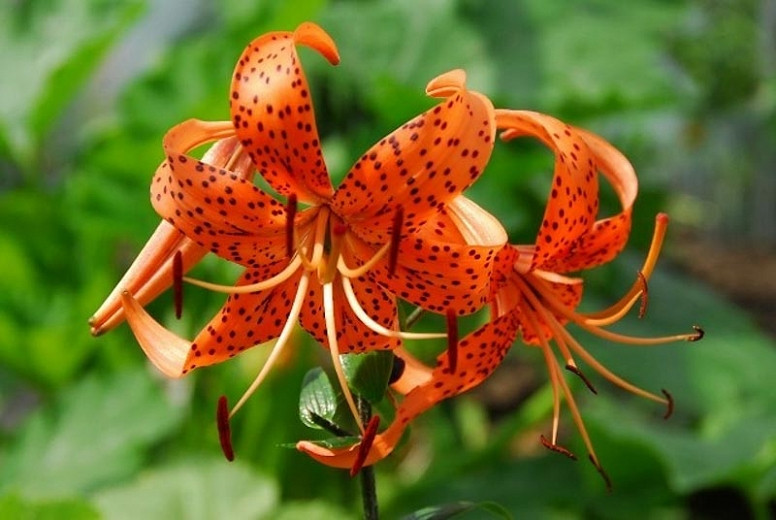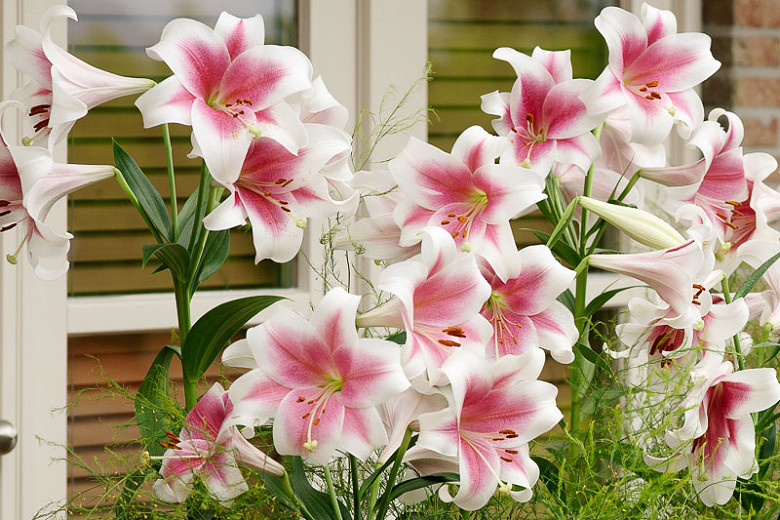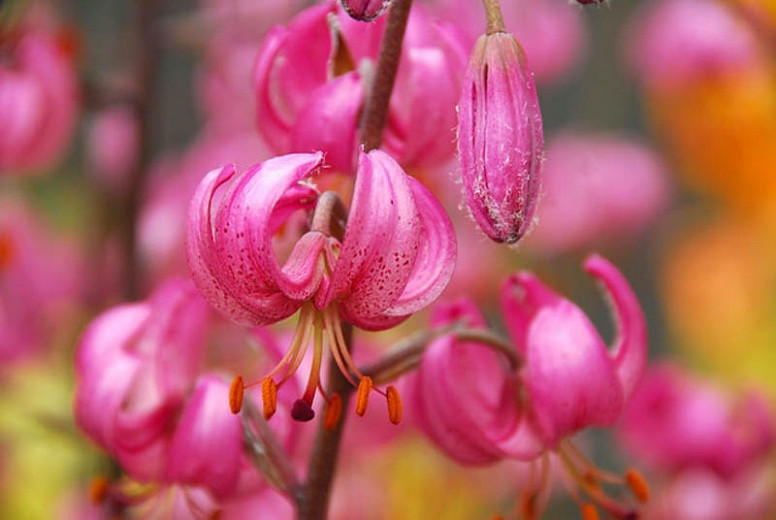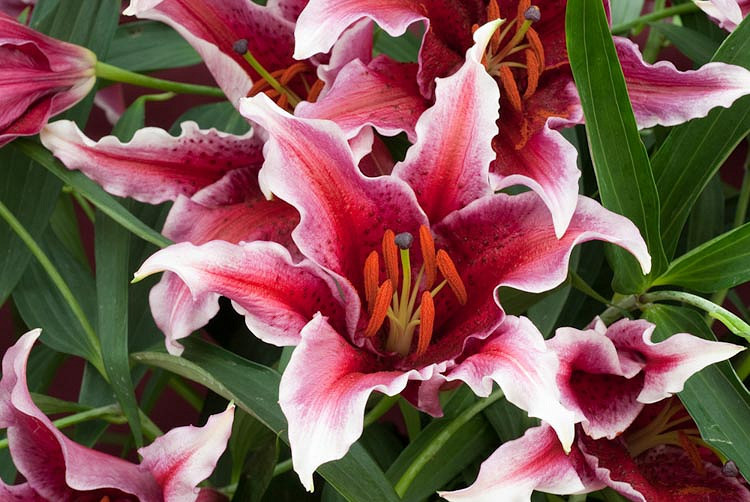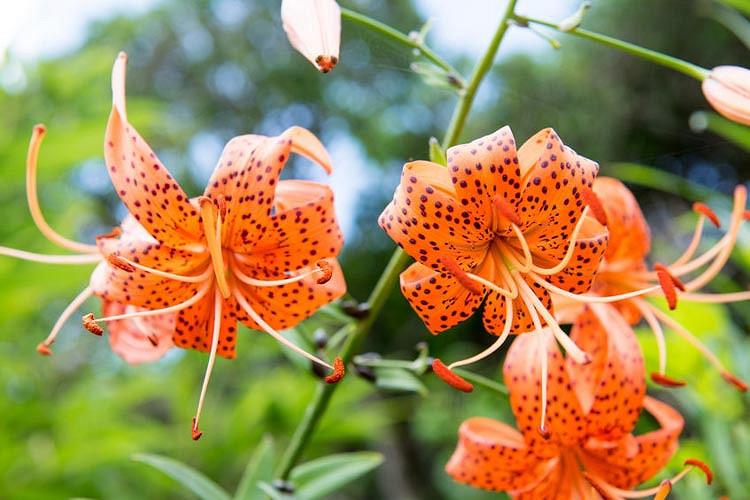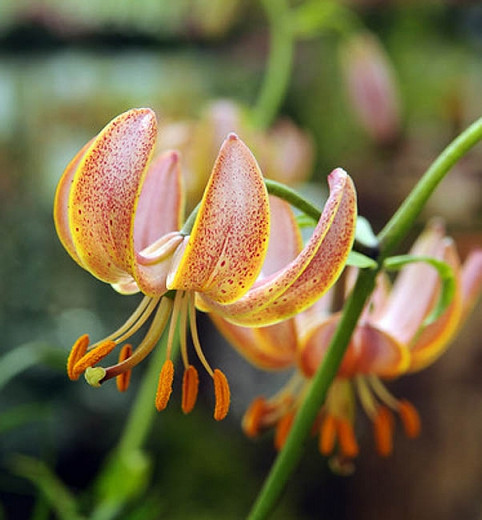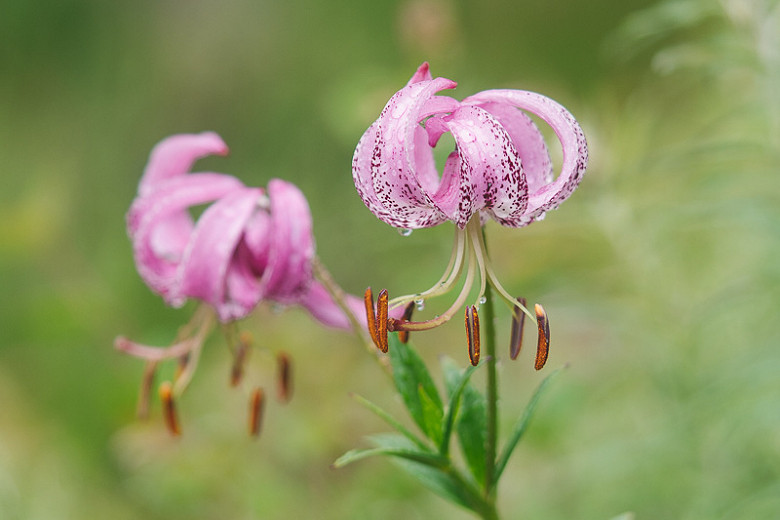Lilium Arabian Knight (Martagon Lily)
Fragrant and fascinating, Lilium ‘Arabian Knight’ is a stunning beauty with its racemes elegantly covered with bountiful golden blossoms delicately covered with dark mahogany spots
Fragrant and fascinating, Lilium 'Arabian Knight' is a stunning beauty with its racemes elegantly covered with bountiful golden blossoms delicately covered with dark mahogany spots and mostly downward facing. This, coupled with the strongly recurved petals resembling a Turk's cap (hence the common name) makes it a dramatic sight in the garden. Up to 50 flowers can open on one stem!
- Blooming in early-mid summer, this lily comes back year after year and constitutes an excellent border plant, providing striking color and contrast to the perennial border and mixing beautifully with annuals and other summer flowering bulbs. It is well suited to containers and the cutting garden too.
- Growing up to 3-6 feet tall (90-180 cm) on slender stems clad with whorled leaves, it is highly disease-resistant and performs best in full sun or part shade. Martagons enjoy slightly alkaline, well-drained soils. Good moisture is required and dry soils should be avoided. Although it might take them a year to adjust to a new garden, once established, the Martagons will thrive for years.
- Plant in fall or anytime between spring and fall for potted plants.
- When flowering is over, cut back leaves and stems after they turn yellow. This plant may self-seed.
- Toxic to cats (though not for dogs or any known species).
- This Lily is a member of the Martagon Hybrid Division (II) which includes the hybrids of Martagon lilies derived from L. × dalhansonii, hansonii, martagon, medeoloides and tsingtauense. Flowers usually small, often numerous, mostly downfacing, typically with rather thick, recurved tepals and often of Turk’s cap form, and often borne in a narrow, cylindrical inflorescence; sometimes out-facing with tepals hardly recurved. Spots usually present, numerous, often on at least three-quarters of each tepal and sometimes also on the edges of the outside. Tepal-margins usually smooth. Flowers with little or an unpleasant scent. Buds often hairy. Leaves typically whorled, often rather broad. Bulbs often mauve or orange-yellow. Early flowering. There are 9 different types of lilies classified by the Royal Horticultural Society. And they are all real eye-catchers!
Requirements
| Hardiness | 3 – 7 |
|---|---|
| Heat Zones | 1 – 7 |
| Climate Zones | 1, 2, 3, 4, 5, 6, 7, 8, 9, 10, 14, 15, 16, 17 |
| Plant Type | Bulbs, Perennials |
| Plant Family | Lilium – Lilies |
| Exposure | Full Sun, Partial Sun |
| Season of Interest | Summer (Early,Mid) |
| Height | 3' – 6' (90cm – 180cm) |
| Spread | 4" – 8" (10cm – 20cm) |
| Spacing | 7″ (17cm) |
| Depth | 7" (17cm) |
| Water Needs | Average |
| Maintenance | Low |
| Soil Type | Chalk, Clay, Loam, Sand |
| Soil pH | Alkaline, Neutral |
| Soil Drainage | Moist but Well-Drained, Well-Drained |
| Characteristics | Cut Flowers, Fragrant, Showy |
| Attracts | Bees |
| Garden Uses | Beds and Borders, Patio and Containers |
| Garden Styles | City and Courtyard, Cutting Garden, Informal and Cottage |
